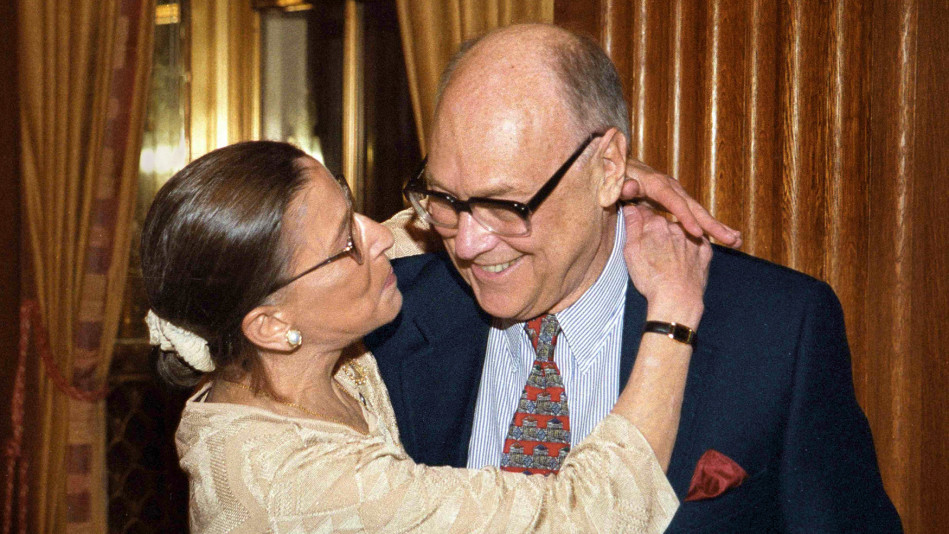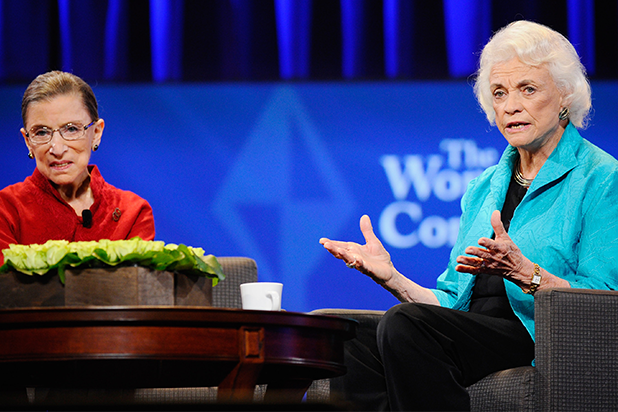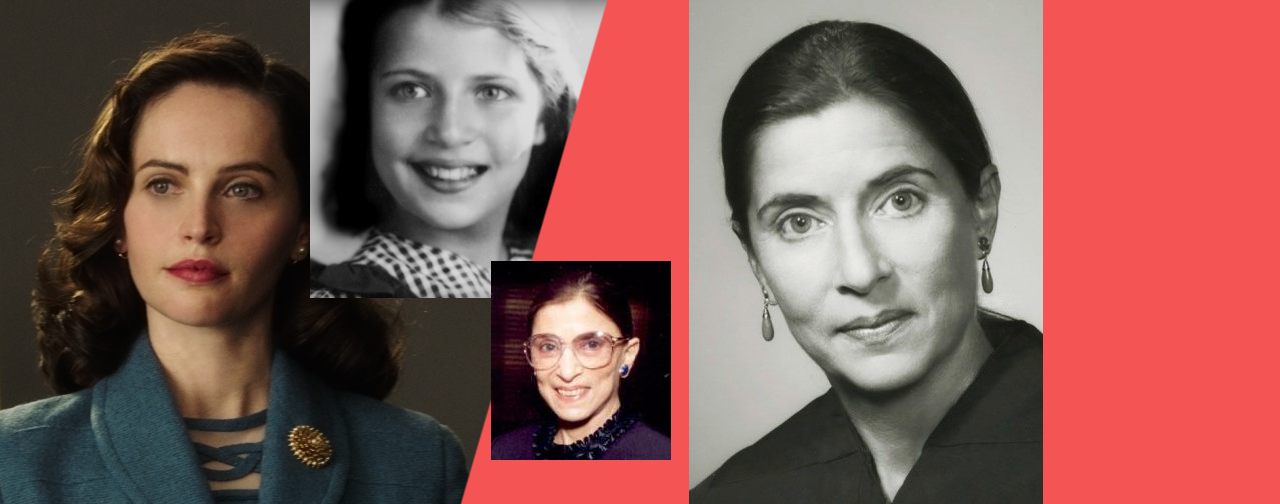Justice Ruth Bader Ginsburg is amazing, an American icon, like Senator John McCain. She will be remembered long in her history. In the movie RGB, she explains that she treated women’s equality just as she treated civil rights for blacks. For years, she has been working for women to be paid equal to the amount that men are paid. The problem with her position is that I simply don’t agree with that goal.
As we hear news that Justice Ginsburg has cancer for the third time, we also have the opportunity to learn more about her through two good movies, On the Basis of Sex and RGB. I have complete respect for Ruth Bader Ginsburg and a rudimentary understanding of her importance of standing up for equality of women. She is a truly admirable human being, for her brilliance, her dedication and hard work. Furthermore she tied for No. 1 in her class at Columbia, although she started law school at Harvard and she was not allowed to complete her degree there after she moved to New York.
Ruth Bader Ginsburg’s mother, who died when she was 17, had a huge influence on her life. Mrs. Bader had cancer and suffered from it for many years, but still managed to be an excellent mother. According to a segment in the movie, RGB, Justice Ginsburg’s mother taught her two things, to be a lady and to be independent. She also told her that, if prince charming comes along, go ahead and get married.
The importance of her mother and her partner

Fortunately, Ruth Bader met the love of her life, her husband Marty, shortly after she began college at Cornell. She was blessed with the husband she met, and he was blessed with a loving, nurturing partner. Ruth nursed him through his first bout of cancer during law school, and attended his law classes to take notes as well as her own classes. She was married with a toddler at the same time!
Anyone who explores the truth, knows that the Ginsburgs were truly a partnership in love and marriage, as well as professional aspirations. Like many power couples, their marriage was one in which a partner’s success was equally dependent on the work of the other. President and Nancy Reagan were also a complete partnership; their goals could not been accomplished without the other, as son Ron Reagan explained so eloquently at Nancy’s funeral. In the case of the Reagans, President Reagan was the outer face of the partnership, while Justice Ginsburg is now the outer face of the couple’s legacy. Her accomplishments are amazing for someone barely 5 feet tall! But she could not have done it by herself.
Feminists will be pleased that Marty Ginsburg let his wife take the credit while he worked as a law school professor and argued many cases with her. But many feminists are not pleased with movie RGB, because it gives too much credit to Justice Ginsburg’s husband.
Many of the feminists of today should learn a lesson or two about being a lady and the fact that it does make you more effective in the long run. Justice Ginsburg is an example of being brilliant, modest and a lady, something we rarely find in feminists.
As a woman, Justice Ginsburg greatly benefited from having a wonderful mother who gave her good advice. Not everyone is so lucky with finding a partner, or by having such a great mother.
Role playing, legal ideas and wage equality
The cases that Justice Ginsburg and her husband took up, which often went to the Supreme Court, will have a lasting effect on American policy. Their careers championed the idea that no one should be limited in opportunities, outcomes and potential on the basis of sex. On the Basis of Sex highlighted the case of Charles Moritz, a man who was not allowed to deduct spending caretaker money on his aging mother because the IRS determined he didn’t qualify a “caretaker” being a single man. (Upon closer examination, interpretation of the law was more about the IRS wanting its money than caring if Moritz was a man. The law and ruling is explained here.) Throughout life, their partnership fought against laws that hemmed men or women into predetermined roles. Another case they challenged involved social security payments to a man whose wife died.
Justice Ginsburg will be remembered for role in support Lilly Ledbetter with equal pay, Ledbetter vs. Goodyear. It was a case of factory work in the Goodyear Tire plant, and Ledbetter was a supervisor who wasn’t earning nearly the same as men at time of retirement. (It probably was a case of gender discrimination, but the focus of the individual case is too deep to evaluate here.)
I don’t support pay equality codified into national law, because I believe that many women would like the flexibility not to work overtime. Many women prefer getting special arrangements that allow them to take off from work to be with children. This year California is requiring for all publicly traded companies to have women on the Board. Apparently 25% of the companies don’t, but this change is heavy handed. What if women don’t want to be on the Board? I was on the board of a family company at one time and, disinterested, I hated it.
What if women purposely choose professions like teaching and counseling which don’t necessarily pay a lot? Again, feminism aspires for women to be like men, not for women to be that best women can be. Money has practical applications, but too often it’s used by society to judge a person’s worth. Women’s pay is about 77% of what men’s pay is the US, but women have an outsize role in kindness, volunteering, nurturing and making the world a better place.
Other Women on the Supreme Court
Both Justice Ginsburg and Justice Sandra Day O’Connor, another legal giant, were denied jobs at law firms in ‘50s, on the basis of their sex. O’Connor was no. 2 in her Stanford Law class behind Chief Justice Rehnquist. An interesting secret, recently revealed, is that Justice Rehnquist proposed to her and she declined, marrying someone else in her law school. They remained good friends.
Justice Ginsburg and Justice Antonin Scalia and their spouses were closest of friends, strongly bond by their great love of opera. Modern politics, and modern feminists miss out by not being friendly and caring to those of opposing ideologies.

I admire both Justices O’Connor and Ginsburg for their brilliance and their trailblazing, but I don’t want to be like them or want my children to be like them, either. I admire that they were mothers as well as movers and shakers. Yet we shouldn’t hold them up as our ideals, because most people –men or women—cannot do it all and are not in the same category of intelligence.
As for equality of representation, all three of the women now on the Supreme Court were born and raised in New York City. Growing up in New York City, these women do not have a frame of reference that links them to the concerns of the vast majority of American women. Overcrowded New York is a place for fighters and pit bulls, a place where people are more competitive, playing offense and defense from the start of life. How is this just and fair for equality of representation, now that all the women on the Supreme Court are from New York City?



Another factor in ‘unequal pay’ is that men often have dependents such as a homemaker and children that they support. Employers need to have discretion in putting together compensation packages that take differing situations into account.